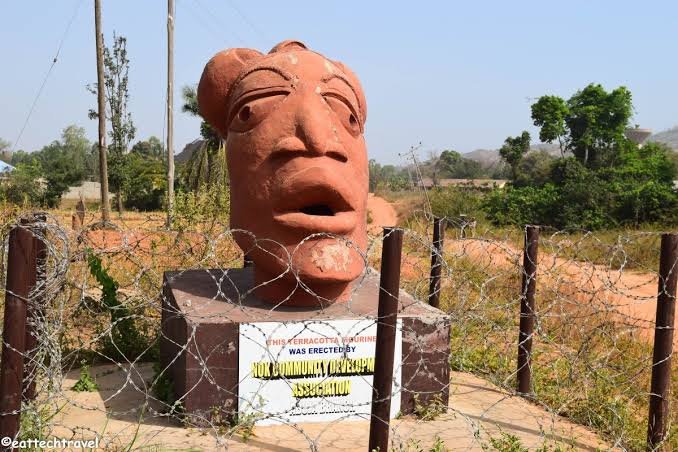The Nok Culture is one of the most significant and earliest known civilizations in West Africa, flourishing between 500 BCE and 200 CE. This ancient culture is renowned for its advanced artistry, particularly its terracotta sculptures, which have provided invaluable insights into the early history of Nigeria.
Discovery and Archaeological Significance
The Nok Culture was first discovered in 1928 by a British archaeologist named Bernard Fagg. The discovery was made in the village of Nok in present-day Kaduna State, Nigeria. Since then, numerous terracotta figures and artifacts have been unearthed, revealing a sophisticated society with a rich artistic tradition.
Terracotta Sculptures
The most iconic artifacts of the Nok Culture are its terracotta sculptures. These sculptures are characterized by their intricate designs and detailed human and animal figures. The human figures often feature elaborate hairstyles, jewelry, and expressive facial features, suggesting a high level of skill and artistic expression. The terracotta works are believed to have served religious or ceremonial purposes, although their exact function remains a subject of scholarly debate.
Technological and Cultural Achievements
The Nok people were not only skilled artists but also advanced in other areas. They practiced iron smelting, making them one of the earliest known cultures in sub-Saharan Africa to work with iron. This technological advancement likely contributed to their agricultural and societal development.
The Nok Culture also exhibited a well-organized social structure. The presence of large settlements and complex burial practices indicates a society with distinct social hierarchies and cultural practices. The artifacts suggest that the Nok people engaged in trade with neighboring regions, further highlighting their influence and connectivity.
Decline and Legacy
The decline of the Nok Culture remains a mystery, with theories ranging from environmental changes to invasions by neighboring groups. Despite its decline, the legacy of the Nok Culture endures through its remarkable terracotta sculptures, which continue to captivate historians and archaeologists.
The Nok Culture’s contributions to art, technology, and society have left an indelible mark on Nigerian history. Its discovery has provided a window into the early development of complex societies in West Africa and continues to inspire research and admiration.












